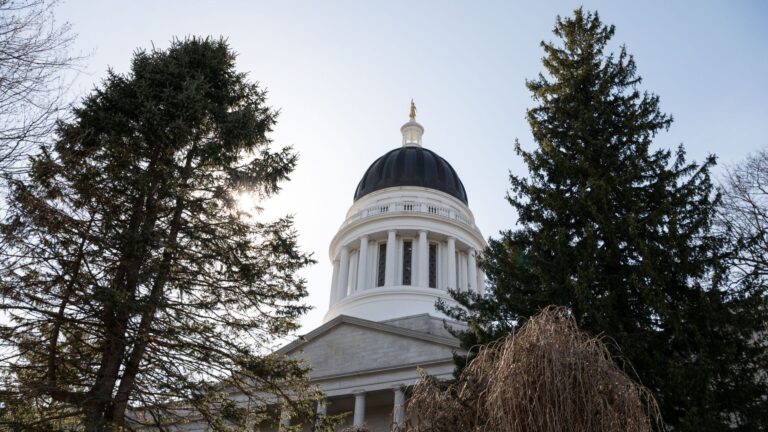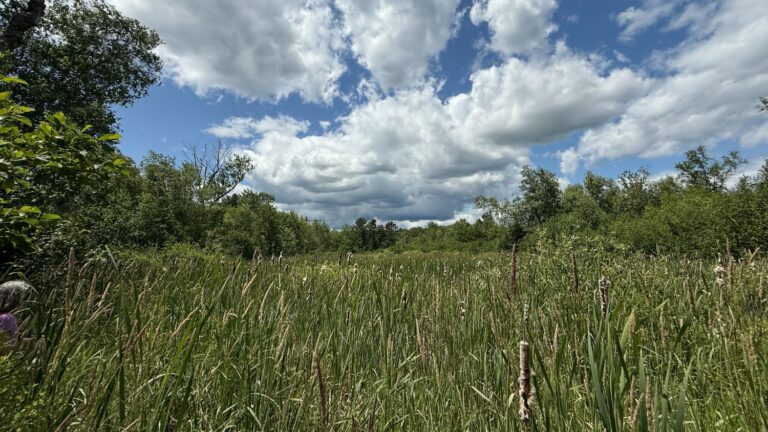A few weeks ago, I wrote about what goes into the organic food label. But I left out an important category: seaweed.
Species like kelp and rockweed, which grow off Maine’s coast, are used in a variety of foods, crop fertilizers, and even skincare. They’ve also been heralded as a type of climate solution, as kelp can lock in planet-warming carbon beneath the waves, much as forests do on land. Many of the companies operating in Maine market their products as organic.
Organic practices are rooted in developing healthy soil. So how does seaweed, which grows in the water, get the label?
On the heels of Seaweed Week in Portland earlier this month, I’m digging into the debate: can seaweed be considered organic, and what does it have to do with curbing climate change?
The answer depends on who you ask.
A set of organic guidelines for “sea vegetables” prepared by the Maine Organic Farmers and Gardeners Association’s Certification Services imposes restrictions on how and where species can be harvested.
The guidelines mandate that organic farm-cultivated and wild-harvested seaweeds must be grown at set distances from industrial wastewater and town sewage discharge areas, major harbors, nuclear facilities and other sources of potential contamination. The guidelines are based on requirements from the National Organic Program, which is administered by the U.S. Department of Agriculture.
Some ecologists, including Robin Hadlock Seeley, are unsatisfied with the current standards. Hadlock Seeley is a retired marine ecologist and co-founder of the Maine Rockweed Coalition. She has long been an advocate of stricter sustainability standards for wild harvesting in the state, arguing that organic standards need to do more to protect against what she says are negative impacts of taking too much rockweed from ecosystems where they provide habitat for a myriad of marine life.
“You can’t treat sustainability as if it were maximum sustainable yield,” said Hadlock Seeley. “You have to look at ecological sustainability, which means as you’re taking the biomass of the plant, are you affecting the structure and functioning of the ecosystem in which it is embedded.”
In 2020, the National Organic Standards Board, which suggests rules for the NOP to adopt, voted in favor of updating the recommendations for marine macroalgae, the technical term for seaweed. They included parameters prohibiting harvest methods like bottom trawling and more stringent restrictions on where and when species could be taken from wild ecosystems.
The NOP ultimately decided not to adopt the recommendations, citing technical complexities of marine environments that make rulemaking “problematic.” Seraphina Erhart is the general manager of Maine Coast Sea Vegetables, a USDA-certified organic business based in Hancock. Erhart, who also sits on the Maine Seaweed Council, the industry group for seaweed companies in the state, objected to the 2020 recommendations. She said it’s difficult to make “blanket” recommendations that lump all species of marine macroalgae together.
“We need to be differentiating between each species, because their habitats are different and their needs are different,” said Erhart.
Currently, the older standards on wild crop harvesting remain in place, though the NOP maintains the option to implement the recommendations through rulemaking in the future. At the NOSB’s spring 2025 meeting, rockweed was again on the agenda, opening the doors to revisit conversations about organic standards. Erhart said the appetite is growing across the organic industry to incorporate rockweed and other seaweed species into organic practices extending beyond coastal Maine.
Part of seaweed’s appeal are the purported climate benefits it brings to bear on both land and water. When used in organic fertilizers on land, seaweed acts as a biostimulant, where it can boost crop resilience and nutrient uptake.
Maine Sea Grant’s Marine Extension Associate Jaclyn Robidoux said one of the most frequent questions she gets from the public is around seaweed and climate change. When it comes to the water, she said it’s important not to cast seaweed as a large-scale carbon removal method.
“While seaweed is certainly highlighted as a climate solution pretty often, the real story is a bit more nuanced,” said Robidoux.
That’s because the research is still ongoing. There has, however, been some research into kelp farms’ abilities to mitigate ocean acidification, Robidoux said. This happens through a phenomenon called the “halo effect”: essentially a forcefield of high-oxygen water around kelp farms that creates suitable conditions for shellfish to form their shells, something they struggle to do in acidic, low oxygen waters.
Still, Erhart cautioned against overhyping the seaweed industry beyond the climate benefits it can reasonably account for at the scale it operates.
“Seaweed is still a climate-positive food or soil amendment, or animal feed, or other things, it’s just maybe not the silver bullet as it relates to carbon that a lot of people were trying to make it out to be,” Erhart said.







